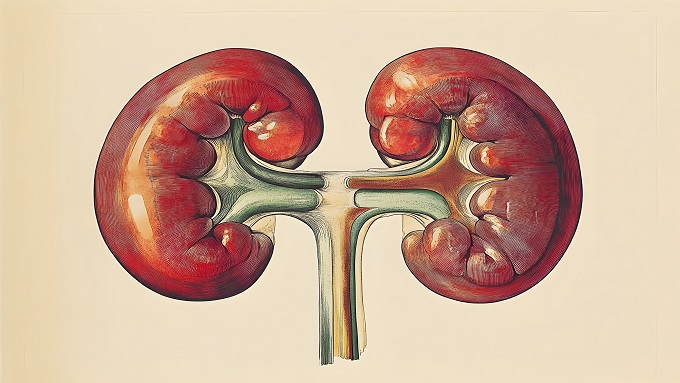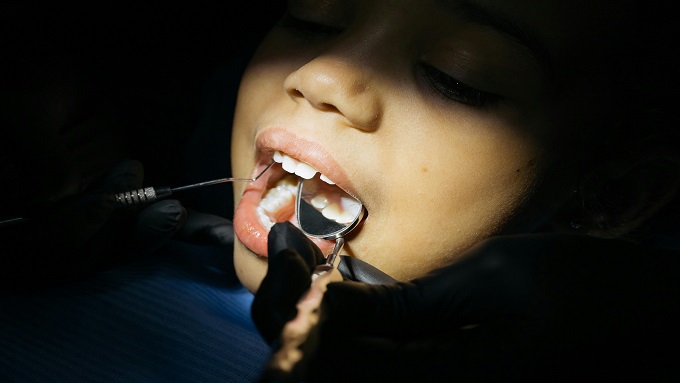HYPERSPERMIA, THE OFTEN-NEGLECTED SEMEN ABNORMALITY AFFECTING FECUNDABILITY

Downloads
Highlights
- Hyperspermia is often ignored, but it can affect fecundability by diluting sperm and reducing sperm concentration.
- Hyperspermia might be associated with genetic causes and male accessory gland infections, but no specific treatment is mentioned to treat this condition.
Abstract
Background: Hyperspermia is defined as a seminal volume greater than 6.3 ml. This definition is often ignored by physicians, while it may affect fecundability. Objective: To report a case of an adult with hyperspermia that affects his fecundability and to discuss it with the scoping review's result. Case: A 30-year-old man came desiring to have a child. He had regular sexual intercourse with his wife for the last 3 months, after living in different cities before. Based on the semen analysis, it was found that he had hyperspermia (volume 8.2 ml) and oligozoospermia (sperm concentration 4.25 million/ml). After taking antioxidants, the seminal volume was lowered, and the couple got pregnant. Method: A scoping review was conducted by using guidelines of Preferred Reporting Items for Systematic Reviews and Meta-Analyses extension for scoping reviews (PRISMA-ScR). After a comprehensive search based on the inclusion and exclusion criteria, only 3 original research were retrieved due to the rarity of articles regarding this topic. Discussion: According to previous studies, hyperspermia can affect fecund-ability by diluting the sperm, causing sperm concentration to be decreased as in this case. Genetic mutation and male accessory gland infection may be contributing factors to hyperspermia. No consensus and studies about the treatment are available. Conclusion: Hyperspermia is a semen parameter alteration that needs to be taken care of to increase fecundability.
Boomsma, C. M., Cohlen, B. J., Farquhar, C. 2019. Semen preparation techniques for intrauterine insemination. Cochrane Database of Systematic Reviews, 2019(11). doi: 10.1002/14651858.CD004507.pub4.
Bornman, M. S., Schulenburg, G. W., Boomker, D., et al. 1994. Observations in infertile African males at an andrology clinic in South Africa. Archives of Andrology, 33(2): 101–104. doi: 10.3109/01485019408987810.
Bostofte, E., Serup, J., Rebbe, H. 1982. Relation between sperm count and semen volume, and pregnancies obtained during a twenty"year follow"up period. International Journal of Andrology, 5(3): 267–275. doi: 10.1111/j.1365-2605.1982.tb00255.x.
Calogero, A. E., Duca, Y., Condorelli, R. A., et al. 2017. Male accessory gland inflammation, infertility, and sexual dysfunctions: a practical approach to diagnosis and therapy. Andrology, 5(6): 1064–1072. doi: 10.1111/andr.12427.
Cooke, S., Tyler, J. P. P., Driscoll, G. L. 1995. Andrology: Hyperspermia: the forgotten condition?. Human Reproduction, 10(2): 367–368. doi: 10.1093/oxfordjournals.humrep.a135944.
Dunson, D. B. 2002. Changes with age in the level and duration of fertility in the menstrual cycle. Human Reproduction, 17(5): 1399–1403. doi: 10.1093/humrep/17.5.1399.
EL-Gharib, M. N., Albehoty, S. B. 2018. Sex and reproduction. International Journal of Sexual and Reproductive Health Care: 001–005. doi: 10.17352/ijsrhc.000001.
Khan, M. S., Ullah, R., Tahir, F., et al. 2012. Seminal volume in the investigation of male infertility. Journal of the College of Physicians and Surgeons--Pakistan : JCPSP, 22(3): 159–62. Available at: http://www.ncbi.nlm.nih.gov/pubmed/22414356.
Konishi, S., Kariya, F., Hamasaki, K., et al. 2020. Coital frequency and the probability of pregnancy in couples trying to conceive their first child: A prospective cohort study in Japan. International Journal of Environmental Research and Public Health, 17(14): 4985. doi: 10.3390/ijerph17144985.
Konishi, S., Saotome, T. T., Shimizu, K., et al. 2021. Fecundability and sterility by age: Estimates using time to pregnancy data of Japanese couples trying to conceive their first child with and without fertility treatment. International Journal of Environmental Research and Public Health, 18(10): 5486. doi: 10.3390/ijerph18105486.
Majzoub, A., Agarwal, A. 2018. Systematic review of antioxidant types and doses in male infertility: Benefits on semen parameters, advanced sperm function, assisted reproduction and live-birth rate. Arab Journal of Urology, 16(1): 113–124. doi: 10.1016/j.aju.2017.11.013.
Mason, M. M., Schuppe, K., Weber, A., et al. 2022. Ejaculation: The process and characteristics from start to finish. Current Sexual Health Reports, 15(1): 1–9. doi: 10.1007/s11930-022-00340-z.
Mawhinney, M., Mariotti, A. 2013. Physiology, pathology and pharmacology of the male reproductive system. Periodontology 2000, 61(1): 232–251. doi: 10.1111/j.1600-0757.2011.00408.x.
Mayorga-Torres, B. J. M., Camargo, M., Agarwal, A., et al. 2015. Influence of ejaculation frequency on seminal parameters. Reproductive Biology and Endocrinology, 13(1): 47. doi: 10.1186/s12958-015-0045-9.
Noweir, H. A., Modgil, V., Pearce, I. 2022. Male accessory gland inflammation (MAGI): an evolving entity. Journal of Clinical Urology, 15(5): 414–423. doi: 10.1177/2051415820987687.
Ricardo, L. H. J. 2018. Male accessory glands and sperm function. in Spermatozoa - Facts and Perspectives. InTech. doi: 10.5772/intechopen.74321.
Shi, X., Chan, C. P. S., Waters, T., et al. 2018. Lifestyle and demographic factors associated with human semen quality and sperm function. Systems Biology in Reproductive Medicine, 64(5): 358–367. doi: 10.1080/19396368.2018.1491074.
Stanford, J. B., Dunson, D. B. 2007. Effects of sexual intercourse patterns in time to pregnancy studies. American Journal of Epidemiology, 165(9): 1088–1095. doi: 10.1093/aje/kwk111.
The ESHRE Capri Workshop Group. 2001. Social determinants of human reproduction. Human Reproduction, 16(7): 1518–1526. doi: 10.1093/humrep/16.7.1518.
La Vignera, S., Condorelli, R., Vicari, E., et al. 2012. High frequency of sexual dysfunction in patients with male accessory gland infections. Andrologia, 44: 438–446. doi: 10.1111/j.1439-0272.2011.01202.x.
World Health Organization. 2021. WHO laboratory manual for the examination and processing of human semen, WHO. Available at: https://www.who.int/publications/i/item/9789240030787.
Zhang, J., Yan, R., Wu, C., et al. 2018. Exome sequencing analysis of semen from patient with hyperspermia. Austin Biology, 3(1): 1–5. Available at: https://austinpublishinggroup.com/biology/fulltext/ab-v3-id1026.pdf.
Zhang, Y., Zhong, J., Wei-jie, Z. 2015. Evaluation on sperm parameters of ejaculates with hyperspermia. Journal of Reproduction and Contraception, 26(3): 131–134. doi: 10.7669/j.issn.1001-7844.2015.03.0131.
Copyright (c) 2024 Markus Christian Hartanto, Cennikon Pakpahan, Aleksander Try Utomo

This work is licensed under a Creative Commons Attribution 4.0 International License.
1. The journal allows the author(s) to hold the copyright of the article without restrictions.
2. The journal allows the author(s) to retain publishing rights without restrictions.
3. The legal formal aspect of journal publication accessibility refers to Creative Commons Attribution 4.0 International License (CC-BY).
































